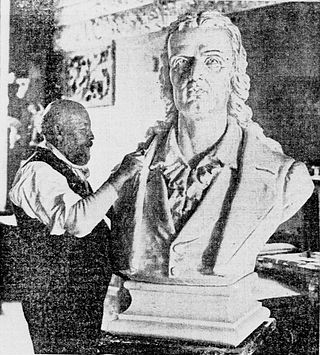
The Presidio of San Francisco is a park and former U.S. Army post on the northern tip of the San Francisco Peninsula in San Francisco, California, and is part of the Golden Gate National Recreation Area.

The Golden Gate is a strait on the west coast of North America that connects San Francisco Bay to the Pacific Ocean. It is defined by the headlands of the San Francisco Peninsula and the Marin Peninsula, and, since 1937, has been spanned by the Golden Gate Bridge. The entire shoreline and adjacent waters throughout the strait are managed by the Golden Gate National Recreation Area.

Golden Gate Park is an urban park between the Richmond and Sunset districts of San Francisco, California, United States. It is the largest park in the city, containing 1,017 acres (412 ha), and the third-most visited urban park in the United States, with an estimated 24 million visitors annually.

The Central Freeway is a roughly one-mile (1.5 km) elevated freeway in San Francisco, California, United States, connecting the Bayshore/James Lick Freeway with the Hayes Valley neighborhood. Most of the freeway is part of US 101, which exits at Mission Street on the way to the Golden Gate Bridge. The freeway once extended north to Turk Street, and initially formed part of a loop around downtown, but was damaged along with the Embarcadero in the 1989 Loma Prieta earthquake; both highways have since been replaced with the surface-level Octavia Boulevard and Embarcadero, respectively.

State Route 480 was a state highway in San Francisco, California, United States, consisting of the elevated double-decker Embarcadero Freeway, the partly elevated Doyle Drive approach to the Golden Gate Bridge and the proposed and unbuilt section in between. The unbuilt section from Doyle Drive to Van Ness Avenue was to have been called the Golden Gate Freeway and the Embarcadero Freeway as originally planned would have extended from Van Ness along the north side of Bay Street and then along the Embarcadero to the San Francisco-Oakland Bay Bridge.

Fort Mason, in San Francisco, California is a former United States Army post located in the northern Marina District, alongside San Francisco Bay. Fort Mason served as an Army post for more than 100 years, initially as a coastal defense site and subsequently as a military port facility. During World War II, it was the principal port for the Pacific campaign.
Events from the year 1884 in art.

The Randall Museum is a museum in central San Francisco, California, owned and operated by the San Francisco Recreation & Parks Department with the support of the Randall Friends. The museum focuses on science, nature and the arts. On exhibit are live native animals and interactive displays about nature. Other facilities include a theater, a wood shop, and art and ceramics studios.
The 49-Mile Scenic Drive is a designated scenic road tour highlighting much of San Francisco, California. It was created in 1938 by the San Francisco Down Town Association to showcase the city's major attractions and natural beauty during the 1939 Golden Gate International Exposition.

Sigmund Stern Recreation Grove, locally called Stern Grove, is a 33-acre (130,000 m2) recreational site in the Parkside District. It is administered by the city's Recreation and Parks Department and is the concert setting for the Stern Grove Festival, which has taken place annually since 1938.

The Music Concourse is an open-air plaza within Golden Gate Park in San Francisco. Flanking the oval-shaped concourse are the M. H. de Young Memorial Museum and the California Academy of Sciences.

Henry Baerer (1837–1908) was an American sculptor born in Kirchheim, Hesse, Germany.

The San Francisco Recreation & Parks Department is the city agency responsible for governing and maintaining all city-owned parks and recreational facilities in San Francisco, as well as Sharp Park Golf Course in Pacifica and Camp Mather in Tuolumne County. Current facilities include 4,113 acres (1,664 ha) of total recreational and open space with 3,400 acres (1,376 ha) of that land within San Francisco. The department runs 179 playgrounds and play areas, 82 recreation centers and clubhouses, nine swimming pools, five golf courses, 151 tennis courts, 72 basketball courts, 59 soccer fields, numerous baseball diamonds, and other sports venues.

The Richard Morris Hunt Memorial is an exedra of granite and marble, dedicated to the memory of the architect Richard Morris Hunt, designed by Bruce Price with three sculptures by Daniel Chester French, a bust of Hunt, and two flanking statues representing painting and sculpture architecture. The memorial is located at the Central Park perimeter wall, at Fifth Avenue and 70th Street in Manhattan, New York. The bronze sculptures were cast by the Henry-Bonnard Bronze Company of New York.

Victor Herbert is an outdoor bronze portrait bust of Victor Herbert by Edmond Thomas Quinn, located in Central Park in Manhattan, New York.

The Concert Grove is a section of Prospect Park, Brooklyn, New York City, that historically functioned as an outdoor music venue. It still serves as a sculpture garden lined with busts of musical figures, largely put up by German American Sängerfest participants and other cultural groups. The Concert Grove also includes the Concert Grove Pavilion, formerly known as the Oriental Pavilion, and adjoins a Lincoln sculpture facing the lake.

An equestrian statue of José de San Martín by Louis-Joseph Daumas is installed in Manhattan's Central Park, in the U.S. state of New York. The sculpture was cast c. 1950 and dedicated on May 25, 1951.

The Lafayette Memorial is a public memorial located in Brooklyn's Prospect Park in New York City. The memorial, designed by sculptor Daniel Chester French and architect Henry Bacon, was dedicated in 1917 and consists of a bas-relief of Gilbert du Motier, Marquis de Lafayette alongside a groom and a horse.



















